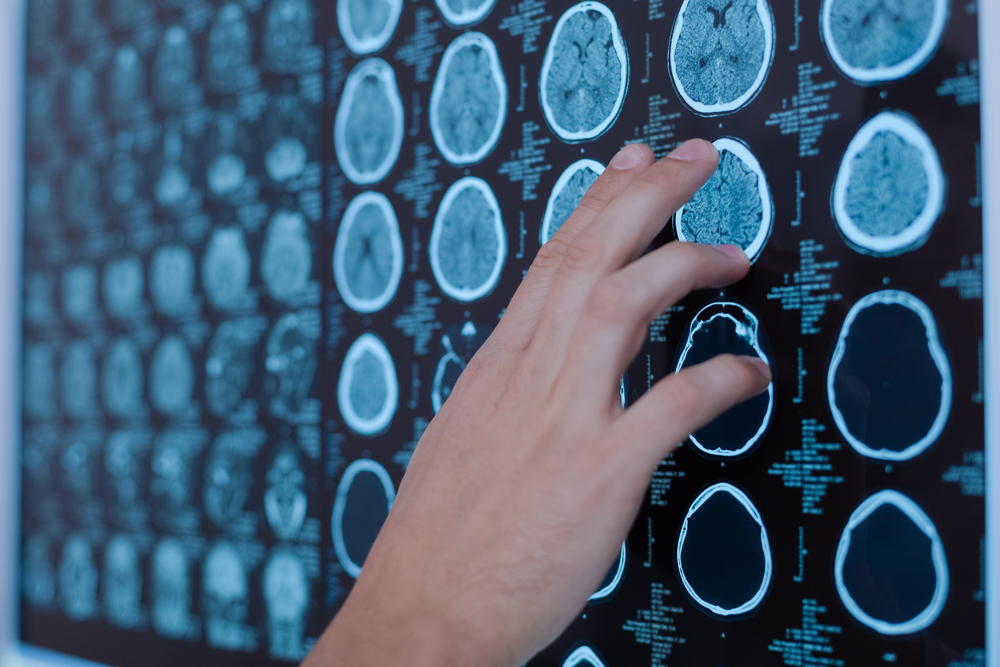MRI Can Detect Difficult-to-Assess Muscle Damage in ALS, Small Study Reports

Magnetic resonance imaging (MRI) may help detect muscle damage in amyotrophic lateral sclerosis (ALS) patients, in particular muscles that are difficult to access using standard techniques, a small study finds.
The research was published in an article, titled “A pilot study assessing T1-weighted muscle MRI in amyotrophic lateral sclerosis,” in the journal Skeletal Radiology.
ALS is characterized by the gradual degeneration and death of motor neurons that connect the brain to the muscles — namely the so-called voluntary muscles (those that allow us to do ordinary movements such as walking, talking, and chewing) — through the spinal cord.
Moreover, in ALS patients, the muscles shrink (a process called atrophy) and start to twitch, a phenomenon called fasciculation.
Currently, there is no effective treatment to stop disease progression or to reverse it. In addition to the effort made to develop new and effective therapies, new approaches for an earlier and more precise diagnosis are also being investigated.
MRI, an established non-invasive diagnostic tool used for inherited and acquired neuromuscular disorders, uses a magnetic field and radio waves to produce detailed images of organs.
However, its value in ALS disease is still largely unexplored. MRI can detect muscle atrophy and remodelling (the replacement of muscle by fat), two of the consequences of ALS.
Therefore, researchers in Italy set out to investigate the potential of MRI to diagnose ALS. They tested the so-called T1-weighted (T1-w) MRI, which is capable of detecting alterations in muscle size or accumulation of fat. They recruited 10 newly diagnosed ALS patients (six males and four females, with a median age of 67.7 years) and nine age-matched healthy controls.
They captured MRI images of hand, paraspinal (group of muscles that support the back), and lower limb muscles of both groups. The selection of the muscles was based on the different regions (cervical, thoracic, lumbar) that are commonly evaluated in ALS patients to determine stage of the disease.
The MRI images were analyzed for evidence of muscular atrophy, and the scientists compared their findings with other techniques used to help in ALS diagnosis, such as electromyography.
Electromyography measures the electrical activity of muscle fibers and detects muscle damage in a more sensitive manner compared with MRI. However, MRI might be useful to study deeper muscles that are more difficult to assess.
The scientists were able to detect muscle atrophy through MRI that was significantly higher in ALS patients (22.46%) compared with healthy controls (0.72%).
The MRIs showed a significant increase in fatty infiltration in ALS patients, in their calf muscles (both the anterior and posterior muscles), and inner hip muscles (called iliopsoas).
When comparing the performance of MRI to electromyography, the researchers found the methods detected different levels of muscle alterations. Electromyography was able to quantify larger muscle damage, probably due to the technique’s greater sensitivity.
“MRI could, instead, be more useful for studying deeper muscles that are difficult to assess using EMG. Further data should be obtained increasing the sample size,” the researchers wrote.
The MRI results also agreed with clinical data for the patients’ dominant hand, measured via the ALS Functional Rating Scale Revised (ALS-FRSr) — low scores, which correspond to poorer performance, correlated with a higher degree of MRI alterations.
Overall, MRI images of muscle can help distinguish ALS patients from healthy controls for specific regions such as the legs; “paraspinal and leg muscle MRI may be a useful diagnostic tool in early ALS,” the researchers wrote.
Future applications of MRI for ALS remain to be explored, and the researchers “plan to conduct a longitudinal study in order to investigate more in depth the role of muscle through MRI measurements as a prognostic or predictive biomarker in ALS patients,” they concluded.






